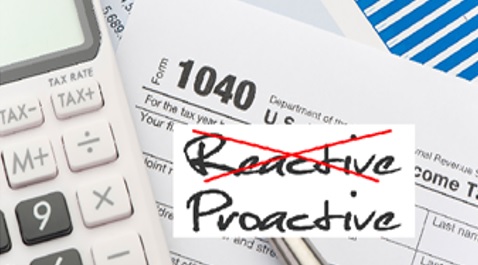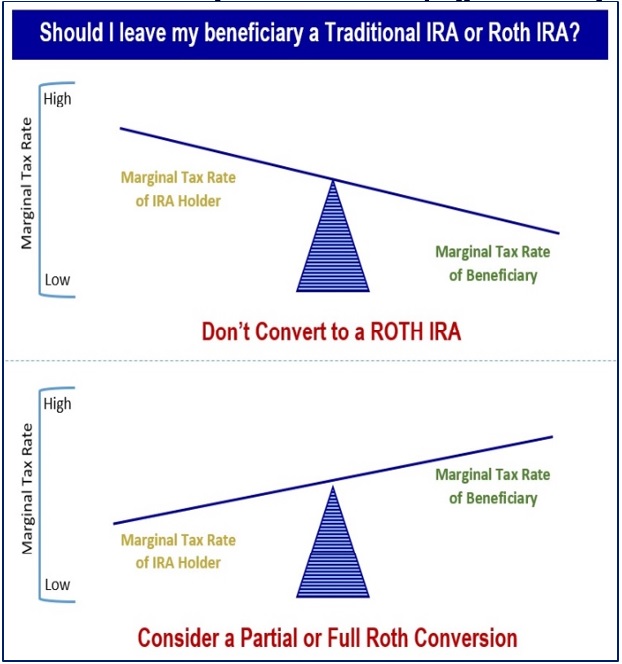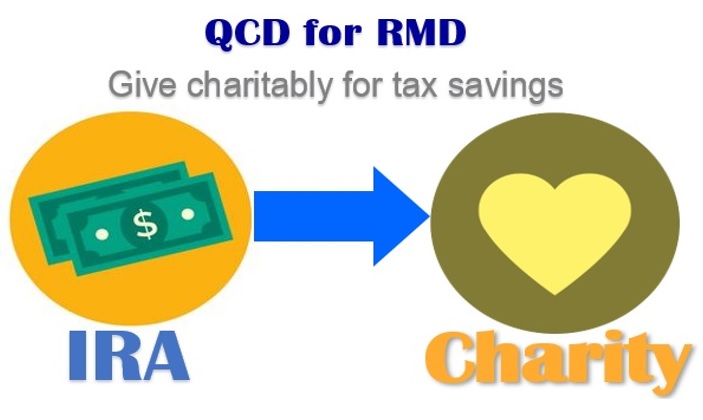New SECURE Act & Proactive Retirement Planning
- 10
- Jun

The House of Representatives passed the Setting Every Community Up for Retirement Enhancement (SECURE) Act on May 23. The next step is to pass through the Senate and be signed by the President. With strong bipartisan support and the Senate already considering changes for retirement plans, industry expert Bob Keebler, CPA, MST of Keebler & Associates agrees with many reporters who are sharing that this is likely to happen. The act’s goal is to make it easier for small businesses to provide a retirement plan and increase the number of Americans with access to a plan.
Some of the provisions of the SECURE Act that could help Americans better save for retirement include;
- Significantly increasing the tax credit for new company-wide retirement plans from the current cap of $500 to $5,000;
- Allowing small employers that implement an automatic enrollment feature in their retirement plan design to become eligible for an additional $500 credit; and,
- Allowing two or more unrelated employers to join a pooled employer plan, creating an economy of scale that lowers both employer and plan participant cost
While making retirement plans more available was the driving force behind the SECURE Act, hidden in this bill are some significant changes that all retirement savers should know for planning purposes. Here are some items that are currently part of this bill.

Increasing the RMD age from 70½ to 72
This new legislation calls for an Increase in Age for Required Beginning Date for Mandatory Distributions. Under current law, participants are generally required to begin taking distributions from their retirement plan at age 70½. The policy behind the Required Minimum Distribution (RMD) rule is to ensure that individuals spend their retirement savings during their lifetime and not use their retirement plans for estate planning purposes to transfer wealth to beneficiaries. The age 70½ was first applied for retirement plans in the early 1960s and has never been adjusted to consider increases in today’s life expectancy. The bill increases the required minimum distribution age from 70½ to 72.
Allowing someone over 70 with earned income to still contribute to an IRA
One key change that the SECURE Act calls for is a Repeal of Maximum Age for Traditional IRA Contributions. Specifically, this legislation repeals the prohibition on contributions to a traditional IRA by an individual who has attained age 70½. As Americans live longer, an increasing number continue employment beyond traditional retirement age and this allows Americans with earned income to keep contributing to retirement plans after age 70.

A new provision in the SECURE Act could remove most non-spousal beneficiary’s ability to maximize tax-savings through a strategy known as the “Stretch IRA.” The Stretch IRA allows younger beneficiaries like children or grandchildren to take required minimum distributions from the inherited account based on their own much longer life expectancy. This new bill would force a distribution of the account’s value within 10 years of the original owner’s death.
Proactive Tax Planning

Keebler is suggesting that IRA owners talk with their financial professional about proactive tax planning. He feels that it will help tax-deferred IRA holders to examine the values of alternative strategies. He encourages these IRA owners to consider proactively planning to minimize taxes when passing on the account to a non-spouse heir, especially if the bill eventually becomes law.
Keebler shares that, “Charitable remainder trusts allow investors to leave assets to a charitable organization and to a beneficiary. In that scenario, your beneficiary would collect a stream of income from the assets for a specified time span. At the end of that period, the charity collects whatever is left.”
For the right client, Keebler likes the benefits of a Roth conversion. “A Roth conversion refers to taking all or part of the balance of an existing traditional IRA and moving it into a Roth IRA. This is a strategy we think about when the IRA owner is in a lower bracket than their beneficiary.”
Some reasons why you might convert a traditional IRA to a Roth IRA
Enjoy tax-free withdrawals in retirement.
When taking withdrawals from a traditional IRA, you’d have to pay taxes on the money your investments earned—and on any contributions, you originally deducted on your taxes. With a Roth IRA, as long as you meet certain requirements, all of your withdrawals are tax-free.
Watch your money grow tax-free for longer.
Traditional IRAs force you to take required minimum distributions (RMDs) every year after you reach the RMD required age, regardless of whether you actually need the money. ROTH IRA’s have no RMD requirement, so your money can stay in the account and keep growing tax-free.
Leave a tax-free inheritance to your heirs.
The non-spouses who eventually inherit your Roth IRA will have to eventually take the money out of a tax-free growth situation (if the SECURE Act passes, this could be within 10 years of your passing) but they won’t have to pay any federal income tax on their withdrawals as long as the account’s been open for at least 5 years.
Deciding whether to convert to a Roth IRA hinges on a variety of issues including what your tax rate is now versus later, the tax bill you’ll have to pay to convert, and your future plans for your estate. Also remember, the conversion will be permanent. Once you convert to a ROTH IRA you can’t revert the money back to a traditional IRA
Some considerations before deciding include:
- Will you need the money in the first five years? ROTH IRA conversions have penalties if used in the first five years.
- Will you end up in a higher or lower bracket in the future?
- Where will you take the money from to pay the taxes?

This is where a financial professional can offer some helpful suggestions and strategies. We enjoy talking with clients about the pros and cons of both partial or full ROTH conversions.
Qualified Charitable Distributions (QCDs)
While they are not new to this law, under today’s tax laws and with more taxpayers using standard deductions, Qualified Charitable Distributions (QCD) are a proactive strategy for tax planning for anyone taking a Required Minimum Distribution (RMD). A QCD is a tax-savvy strategy that allows you to transfer up to $100,000 per year from your IRA directly to a qualified charity. It is only available to IRAs and individuals who have reached RMD age (Currently 70½ but may change to 72). Any amount processed as a QCD counts toward your RMD requirement and reduces the taxable amount of your IRA distribution. This QCD lowers both your adjusted gross income and taxable income, resulting in a lower overall tax liability. It also lowers your income for purposes of seeing if your social security is taxable. By using, or preparing to use, a QCD, you can potentially meet your RMD requirements and satisfy your charitable intents, all while saving money on taxes both today and into the future.

Please note, for tax return filings, your IRA custodian is not required to specially identify the QCD on your annual 1099-R form. The responsibility is on you to inform your tax preparer that you used a QCD. If you don’t let your preparer know, they could report this transaction as fully taxable, which would negate the benefit of your smart planning. Also, the distribution must be made directly to a qualified charity.
Once again, this is a specific area where a professional can offer some help, suggestions, and strategies. We enjoy talking with clients about looking into QCDs for anyone over the age of 70.
Final Thoughts on Proactive Retirement Planning
Over your life, you may accumulate assets in tax-deferred retirement accounts like 401(k) plans and traditional IRAs. You may also have Roth accounts that compound without tax consequences. When thinking about the assets you have accumulated in your retirement accounts, a key issue is tax efficiency. Accumulating assets in a tax efficient way is only one part of the strategy, the other more complex part is withdrawing those assets while making use of the most available tax advantages. The goal is to try to proactively plan the withdrawals from retirement accounts to minimize your tax liability.
The Act would provide some slight flexibility on the timing of some of your RMD strategies since the proposed RMD age will be lengthened to age 72. This could provide another 18 months of time before a mandatory distribution is required.
If the SECURE Act becomes law, in whatever version it becomes, one of our primary goals is to review it for opportunities and then share our observations with clients. We want to always try to provide proactive tax planning ideas when possible.
Determining the most efficient ways to either withdraw or pass to your beneficiaries your accumulated wealth is always an important decision. Our goal is to remain aware of changes that affect our clients and then share those changes with them.
If you would like to discuss your retirement plan and withdrawal strategy, please call us. Our goal is to understand our clients’ needs and to monitor their wealth. Our primary objective is to take the emotions out of decisions for our clients. We can discuss your specific situation at your next review meeting or you can call to schedule an appointment. As always, we appreciate the opportunity to assist you in addressing your financial issues.
Proactive Tax Planning
A “Proactive” approach to your tax planning instead of a “Reactive” approach could produce better results!

Please share this article with others!
This year, our goal is to offer services to several other clients just like you! If you would like to share this article with a friend or colleague, please call us at (714) 597-6510. We would be happy to assist you!
Financial Advisors Network, Inc. is a Registered Investment Adviser. This post is solely for informational purposes. Advisory services are only offered to clients or prospective clients where Financial Advisors Network, Inc. and its representatives are properly licensed or exempt from licensure. Past performance is no guarantee of future returns. Investing involves risk and possible loss of principal capital. No advice may be rendered by Financial Advisors Network, Inc. unless a client service agreement is in place.
This article is for informational purposes only. This information is not intended to be a substitute for specific individualized tax, legal or investment planning advice as individual situations will vary. For specific advice about your situation, please consult with a lawyer or tax professional.
The Roth IRA offers tax deferral on any earnings in the account. Withdrawals from the account may be tax-free, as long as they are considered qualified. Limitations and restrictions may apply. Withdrawals prior to age 59 ½ may result in a 10% IRS penalty tax. Future tax laws can change at any time and may impact the benefits of Roth IRAs. Their tax treatment may change. Roth IRA account owners should consider the potential tax ramifications, age and contribution limits in regard to funding a Roth IRA. Traditional IRA account owners should consider the tax ramifications, age and income restrictions in regard to executing a conversion from a Traditional IRA to a Roth IRA. The converted amount is generally subject to income taxation. RMDs are generally subject to federal income tax and may be subject to state taxes.
The views stated in this letter are not necessarily the opinion of Financial Advisors Network, Inc. and should not be construed, directly or indirectly, as an offer to buy or sell any securities mentioned herein. Investing involves risk including the potential loss of principal. No investment strategy, such as rebalancing and asset allocation, can guarantee a profit or protect against loss. Rebalancing investments may cause investors to incur transaction costs and, when rebalancing a non-retirement account, taxable events will be created that may increase your tax liability. Indexes are unmanaged and investors are not able to invest directly into any index. Past performance is no guarantee of future results. In general, the bond market is volatile as prices rise when interest rates fall and vice versa. This effect is usually pronounced for longer-term securities. Any fixed income security sold or redeemed prior to maturity may be subject to a substantial gain or loss. The payment of dividends is not guaranteed. Companies may reduce or eliminate the payment of dividends at any given time. This article provided the Academy of Preferred Financial Advisor, Inc. APFA, Inc.©
- Financial Advisors Network Customer Service
- Uncategorized
- Comments Off on New SECURE Act & Proactive Retirement Planning



